Customer Journey - 8 Steps To Building A Customer Journey Map (With Examples)
According to Salesforce research, 80% of customers now consider their experience with a company as important as its product. The above data shows the importance of customer experience or customer experience journey for businesses.
But the question is how to build a customer journey map? Let's find out in today's article.
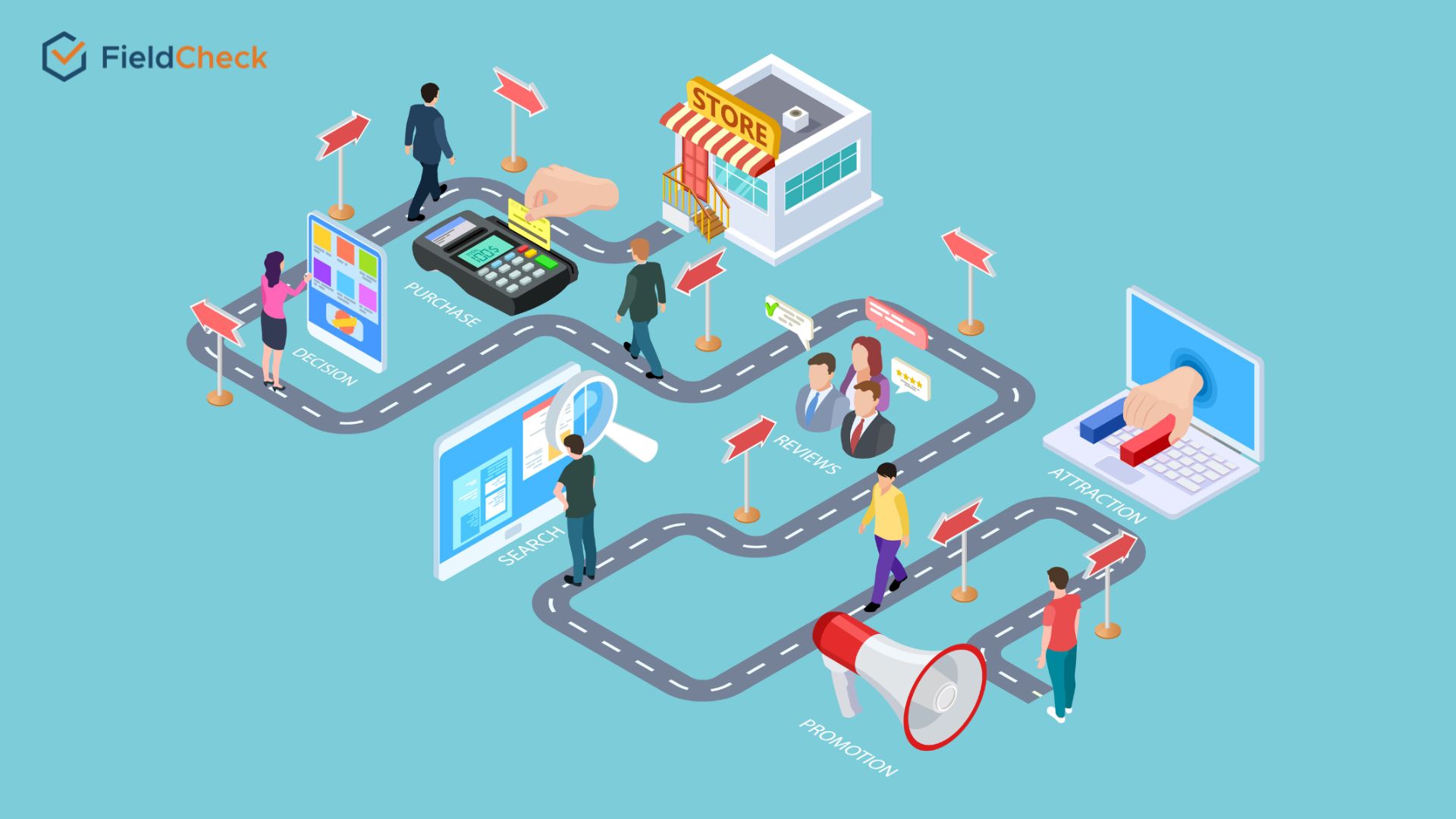
Customer journey is crucial for business
What Is A Customer Journey?
Customer journey simulates how customers experience a brand over time or the journey that connects customers with the brand.
Describing the customer journey helps businesses accurately capture customer journey touchpoints and what customers think, interact with the brand, and ensure consistency at all touchpoints and across all channels.
The customer journey has become more complex in the modern era thanks to online and offline purchases.
Customers interact with brands on many platforms in many different ways from different starting points, such as marketing campaigns, referrals, search engine optimization, social networks, or marketing communication channels to build an image, personality, and theme for the brand.

Finding a suitable customer journey map is crucial for businesses
Here are examples of some basic customer journeys:
- Customers interact on social networks and know about the existence of the business – social networks.
- Users are searching for product information on Google and seeing your website in the first position on the first page in search results – SEO.
- Users refer to information on the website and register for a form to receive documents, product information - content on the site.
- The user contacted customer service, or sales wanted to sign up for a trial – are both teams able to convince the customer to decide at this point?
- Users become paid customers – Email marketing is a great option to connect and build lasting relationships.
- Customers stop using the service – you need to determine the reason.
- You try to convince customers to stay with a more compelling offer – email marketing or social media.

Customers interact with brands on many platforms
Customer Journey Map Concept
What is a customer journey map?
A customer journey map is a visual representation of a customer's experience with a business. It can be understood as the story of the customer experience with the brand from the first interaction in the long-term relationship.
Customer journey mapping includes:
- All customer actions to achieve goals (learn, compare, and buy).
- The entire touchpoint where customers interact with your business from starting to know your brand through ads, face-to-face interactions, and more.
- The design of the entire journey map helps businesses connect with customers, understand their difficulties, as well as the pros and cons of your services and products.
Thereby, management can know trends and issues to take measures to improve customer experience, increase conversion rates, and at the same time promote purchase rates and ensure seamless and consistent customer experience across channels and touchpoints.
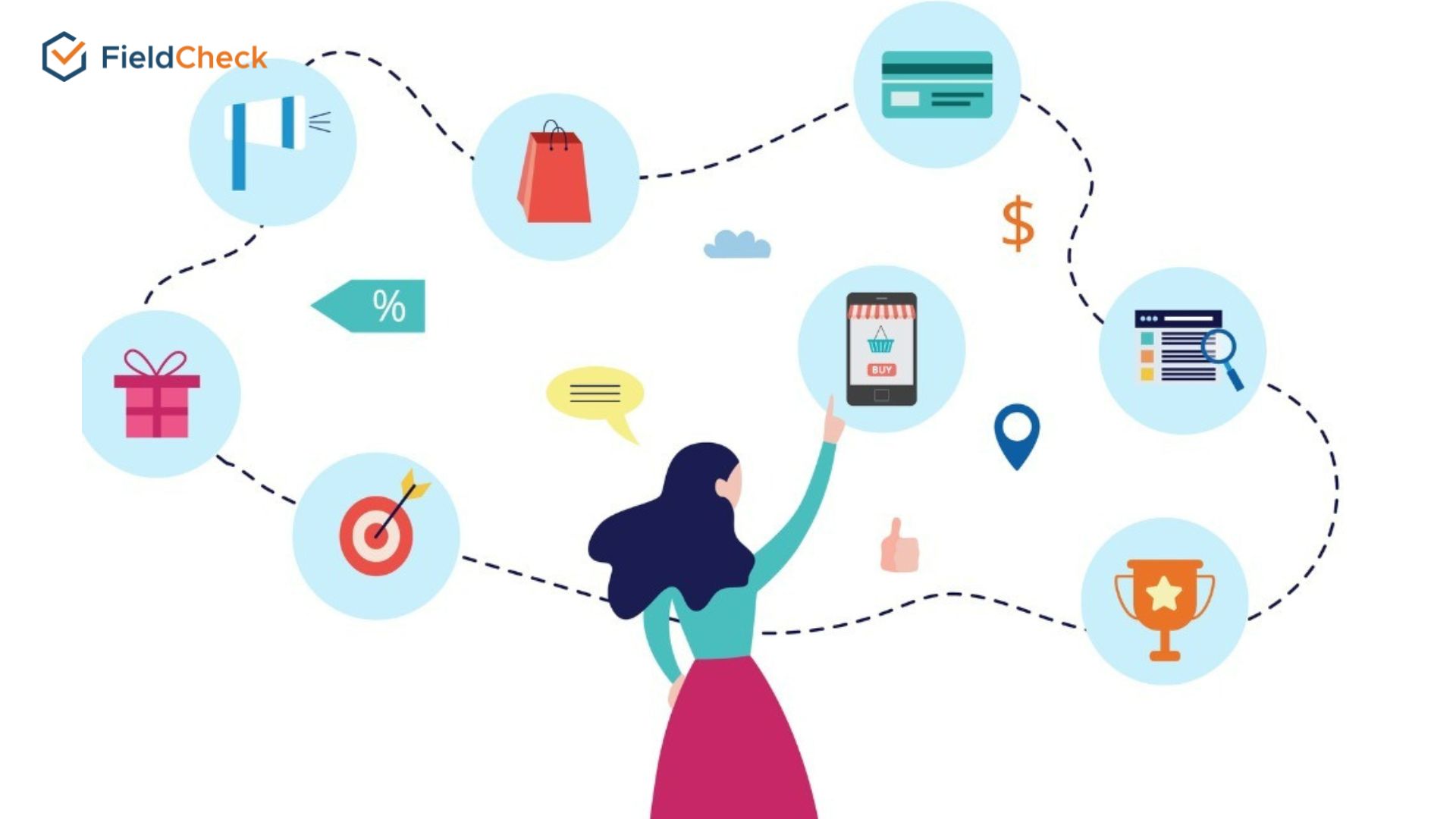
Customer journey mapping
Benefits of the customer journey map
Staged in that interaction will help businesses grasp the problem, identify the "right disease," and optimize each activity. Ultimately, your task is to meet the previously set goals (selling products or services, raising brand awareness), thoroughly solve the problems customers are facing, and build lasting relationships between customers and businesses.
The benefits of customer journey maps include the following:
- Choose the right marketing method.
- Focus on the target customer group.
- The motto 'Customer first' can be applied, all for the customer.
One of the key aspects of the customer journey is personalization. A recent study said that 84% of customers feel that good service when making a purchase is an important factor in helping them make a purchase decision.
Research by Aberdeen Group shows that businesses that are designing customer journey maps will have outstanding growth compared to other companies, such as:
- 10 times reduction in customer service costs
- 56% increase in cross-sales and upsell sales
- 54% increase in profits from ROMI marketing
The question is, how can businesses achieve such growth? The main issue will depend on how well the company understands customers.
Customer-focused strategies or plans have become mandatory criteria for business development today. Besides, the above study shows that 86% of customers can spend more to get a better shopping experience.
Therefore, retailers need to understand customers' psychology and thoughts to improve the customer experience for their products and services.
The customer experience map is the key to solving the question above. A good customer experience map can help businesses understand their customers better and capture their perspective, thereby making decisions to build relationships and improve customer experience—long-term relationships with customers.
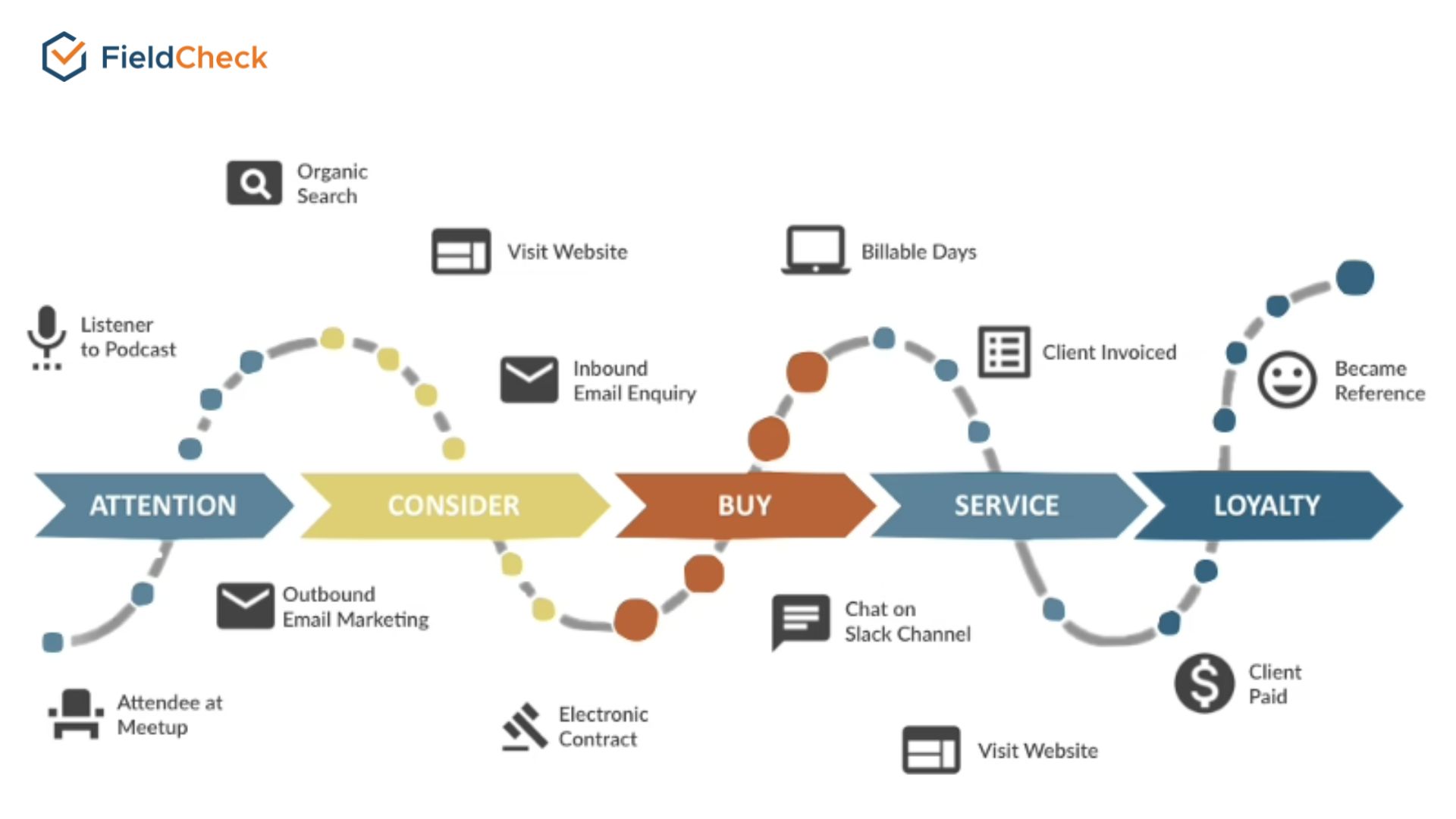
A customer journey map (Source: https://rittmananalytics.com/)
Collecting detailed and complete customer information is important in building an effective and accurate customer journey map. Some important questions businesses can ask when collecting information are as follows:
- Who is the customer segment of your business?
- What are the main channels customers interact with companies?
- What are your products and services that customers prefer?
- What are the points that customers are not satisfied with the company, products, and services?
- Customers can share information across all stages of their journey, and every search, click, like, comment or purchase can reveal important customer insight.
Enterprises need to collect and understand timely data and information in real-time, accurately and comprehensively. To do that, the customer data platform (CDP) or customer data platform is an indispensable tool for businesses.

Collecting detailed and complete customer data
What does a customer journey map include?
1. Purchase process
Customer journey maps include different milestones in the customer journey. You will need to start by outlining the path the business intends for your clients to achieve its goals. Utilizing typical buying process stages, you can horizontally list each stage.
2. User actions
This factor refers to what customers do at each stage of the purchasing process. They can talk to their friends and family about their demand and potential ways to meet them during the awareness stage.
They can preview your website and eventually utilize cash or a debit card to make a buying decision. This factor explores different methods your clients can reach their goals.
3. Emotions
No matter how big or small the goal, it is critical to remember that your customers are potentially dealing with their problems. That means they may feel several emotions - relief, happiness, excitement, or anxiety.
If your process is complicated or takes much time, they might feel various emotions at every stage. Adding these feelings to the customer journey map helps you to minimize negative feelings about your journey. Therefore, they do not turn into negative opinions about your brand.
4. Pain points
By adding pain points to your customer journey map, you can identify which stage your customers have negative emotions and infer the reasons.
5. Solution
As the final factor of a customer journey map, a solution is where you think about potential approaches to enhance your buying process, so your customers can have less trouble and have positive emotions when they support your business.
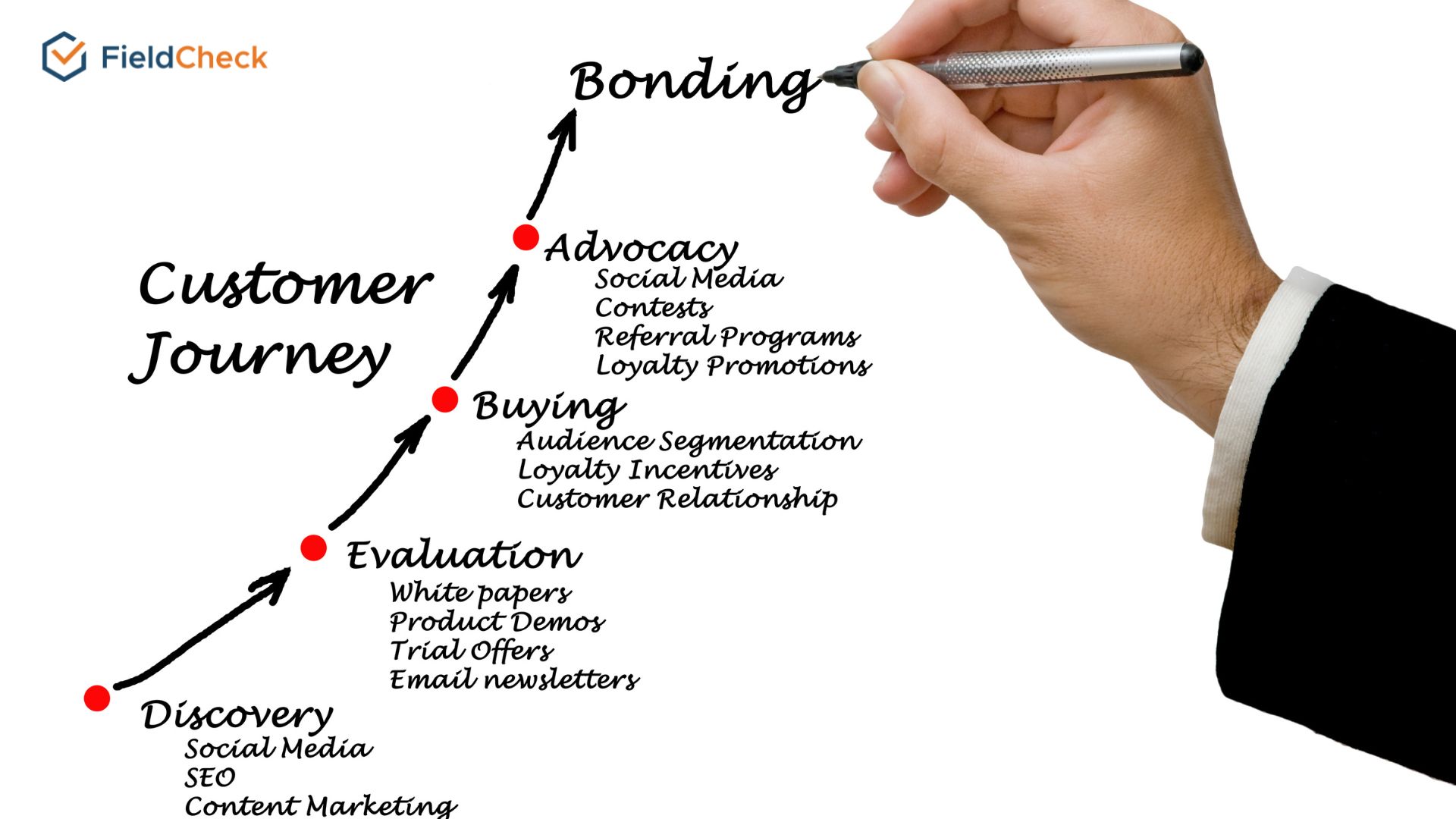
The growth of customer journey
What are the touchpoints in the customer journey map?
The touchpoint in the customer journey map is where customers can form an opinion about your business.
You can find touchpoints in places where your business comes into direct contact with potential or existing customers such as display ads, employee interactions, and even Google reviews can all be customer touchpoints.
The brand exists beyond marketing materials and websites. Therefore, it is advisable to consider different touch points in customer journey maps. The reason is that they can help discover opportunities to improve the buying journey.
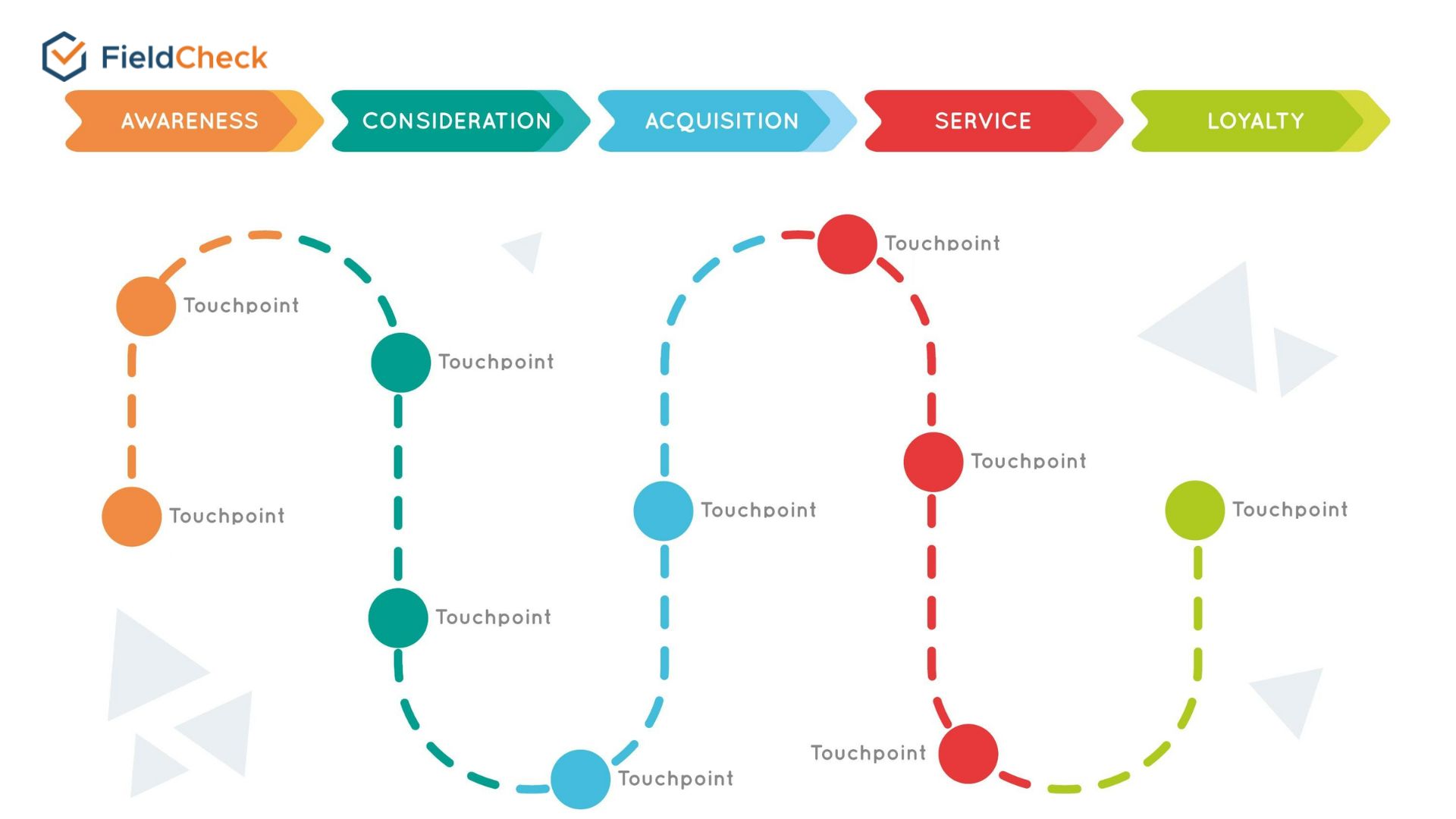
Touchpoints (Source: Salespanel.io)
Steps To Build A Customer Journey
Drawing customer journey maps helps businesses understand customer behavior.
It allows companies to gain insights into their customers' pain points and how they can improve the customer experience and identify potential customers, and potential customers to make purchasing decisions.
Here is the 8-step process of mapping the customer journey suggested by Hubspot:
Step 1. Define your goals
You need to understand why you do this; what is the goal? Who exactly is the target audience? What experience is it based on?
Step 2. Create a customer profile and define their goals
In this step, you need to conduct surveys to get feedback and suggestions (feedback, review) from customers (actual or potential customers) through a questionnaire. Some of the questions could be:
- Through which channels and means did you know our brand?
- What attracts you first when entering the website?
- Problems you are facing or need support from us?
- How much time do you usually spend visiting the website?
- Have you ever purchased products or services from us? What is the purchasing decision factor?
- Have you ever interacted on a website to buy but decided not to buy? What made you make a purchase decision?
- On a scale of 10, how would you rate the navigation on the website?
- Have you contacted our customer service department? How helpful were the responses, on a 10-point scale?
- Your suggestions to make your interaction more convenient.
Step 3. Choose your target customer portrait
Once you understand the characteristics of each customer that interacts with your business, narrow it down to one or two of them.

Choose target customers
Step 4. List all touchpoints
Touchpoints are all the places on your website where customers interact with your business. This is an important element in the customer journey mapping process because it gives us a deeper insight into customer behavior.
Do not stop studying customer behavior only on the website; you can look at other channels such as social networks, paid advertising, email marketing, and media specializing in product and service reviews and reviews.
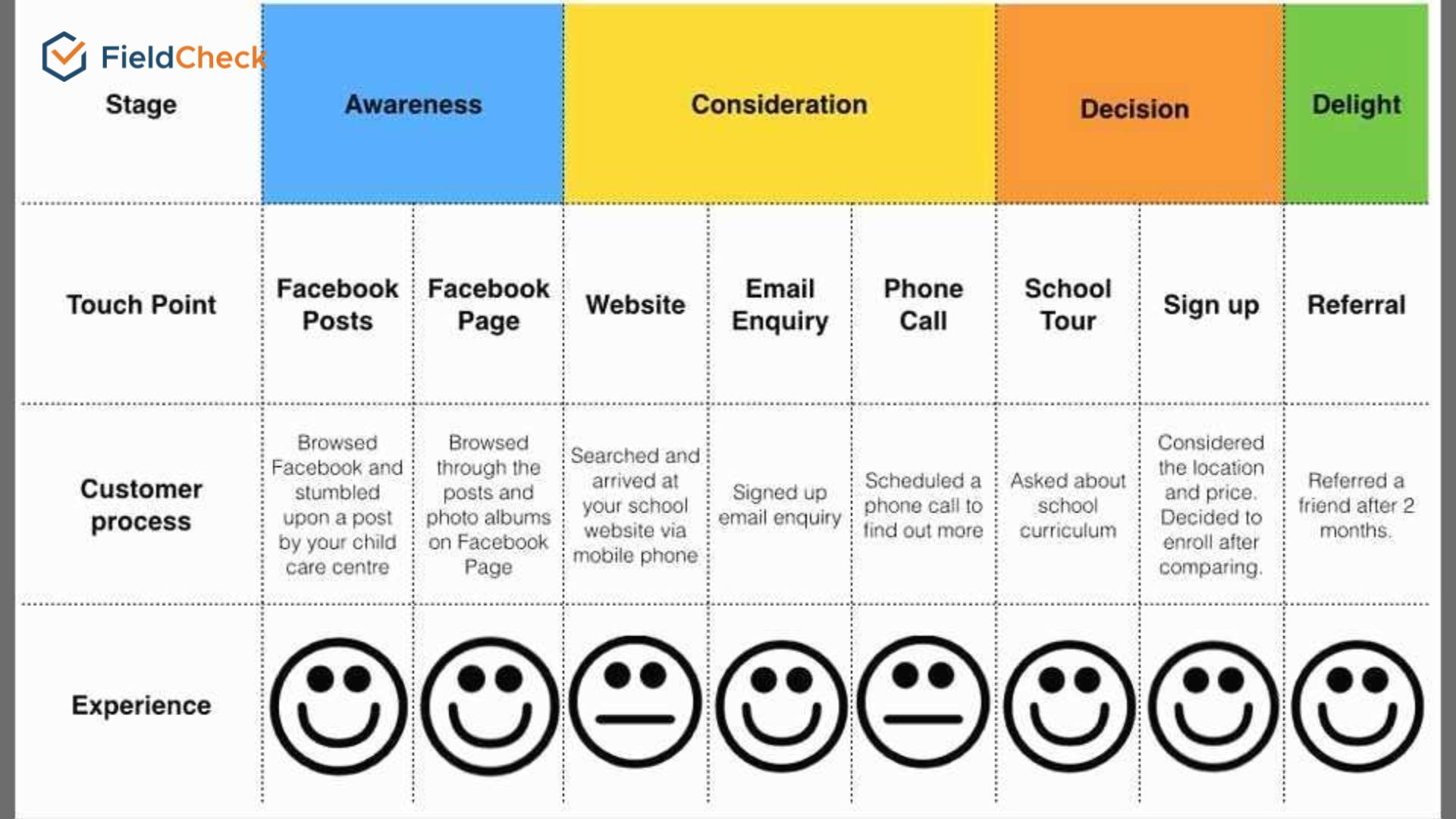
Studying customer behavior
Act
List all the actions customers take throughout the interaction with the brand, for example, Google search engine-related keywords, click on the email you send… This is an opportunity for businesses to streamline information later.
Emotions and motives
Emotions drive every customer's behavior. And that emotion varies across different stages of the customer journey.
And the emotional factor in each customer's behavior is the pain point or problem they face. Understanding these will help you build a seamless customer journey on time.
Obstacles and pain
One of the obstacles that can be seen is the cost. So understanding those obstacles and problems and dealing with them will make the customer experience smoother.
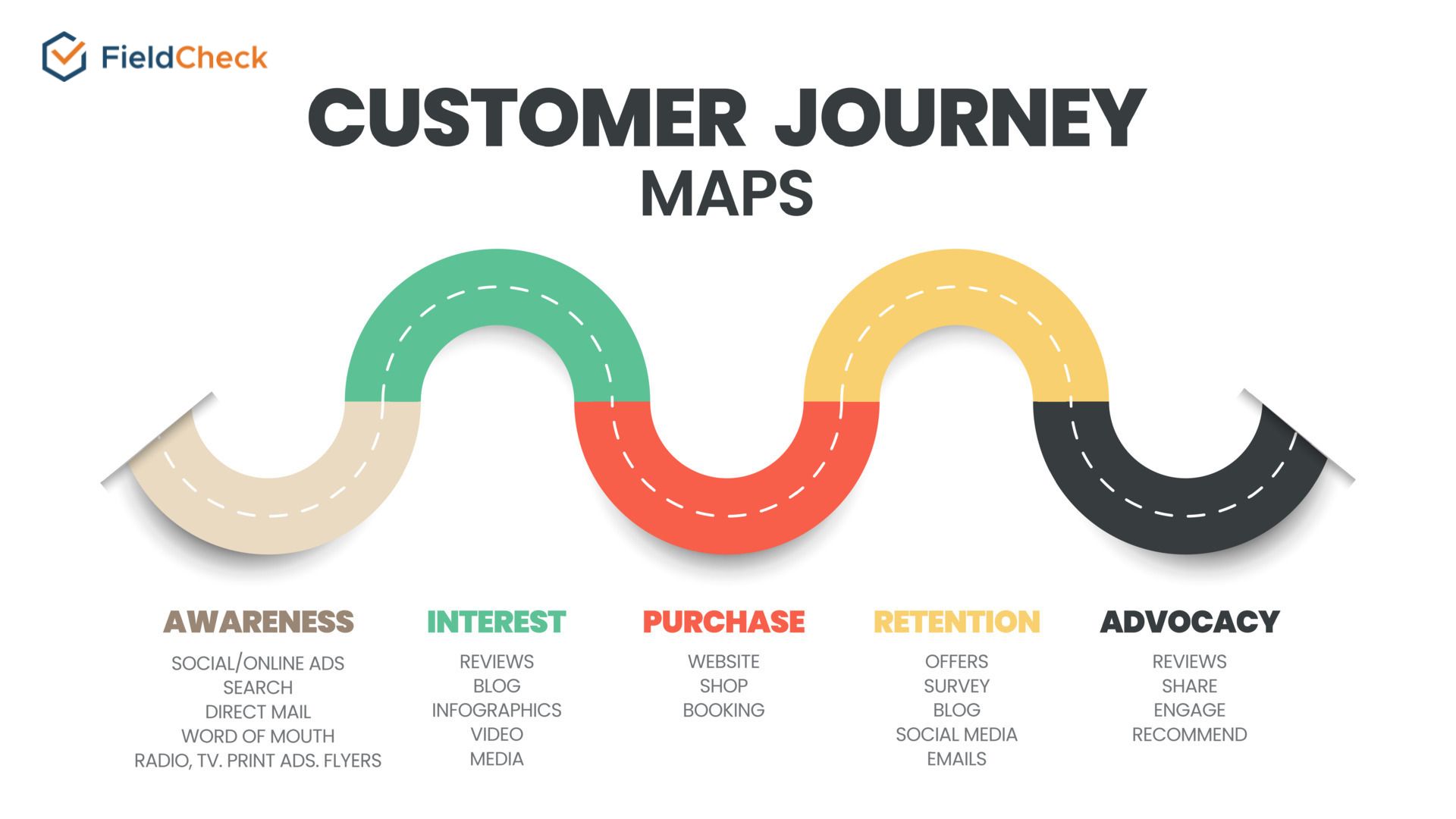
Identify customer's obstacles
Step 5. Identify the elements you want to show on the map
There are 4 types of customer journey maps; depending on the purpose of your business, you can choose the appropriate map type:
Current State – (Empathy Map)
This is a common type used to simulate the actions, thoughts, and emotions customers experience when interacting with the company. This map is very useful and can help to improve the customer journey continuously.
Day in the life – (Experience Map)
This map describes the actions, thoughts, and emotions that customers experience in all activities taking place in daily life.
This category offers a broader perspective on the client's life and pain points. They often address unmet needs before the customer is aware of the market.
Future State
This category describes the actions, thoughts, and feelings you believe customers will experience when interacting with your business. This type is often used to illustrate a vision and set clear goals for the near future.
Service blueprint
This map starts with a simplified version of the ones above but clarifies the elements responsible for delivering the experience, like people, technology, policies, and processes.
This map is often used to identify main causes in the current customer journey or identify steps that need to be taken for the future customer journey.
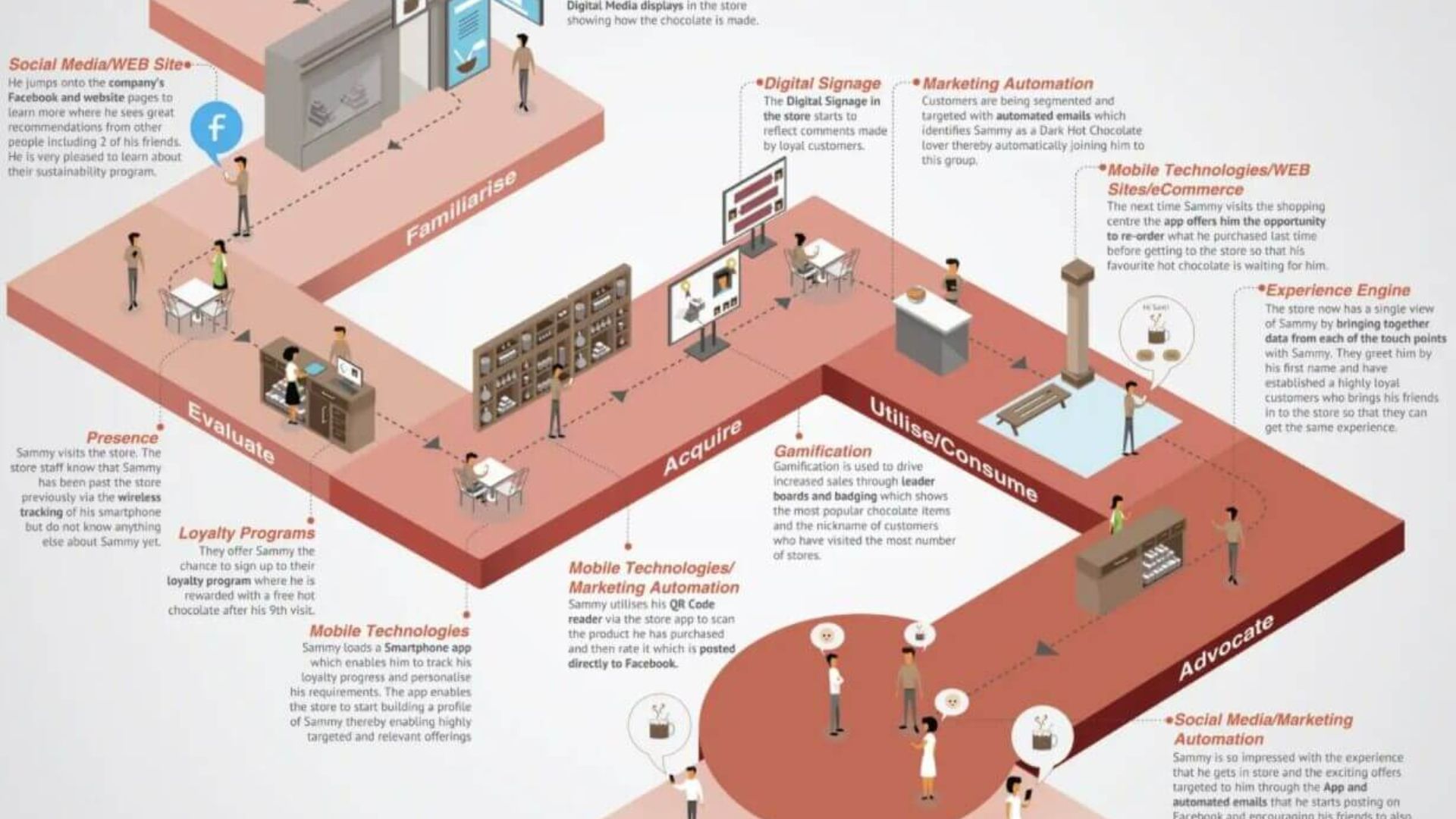
Service blueprint (Source: boagworld-cdn.sirv.com)
Step 6. Identify resources
This section clarifies the resources you'll need to create your desired customer journey. So you need to list and utilize all the help you currently have and the ones you will need to improve your journey.
For example, your map shows an error in customer service, and the customer service department does not have a useful tool to track customers after they purchase and use the service.
Thanks to that, you also more accurately predict the impact of more resources on revenue and business performance to convince the management department.
Step 7. Get into action
Only completing the customer journey map is not sure to complete the task, but also to analyze the results.
- How many people have clicked on the website but haven't made a purchase yet?
- How can businesses support customers better?
Analyzing the results will show where customer needs are not being met so businesses can provide the right customer experience. Each customer group will have its own journey that customers experience through reading emails and searching online.
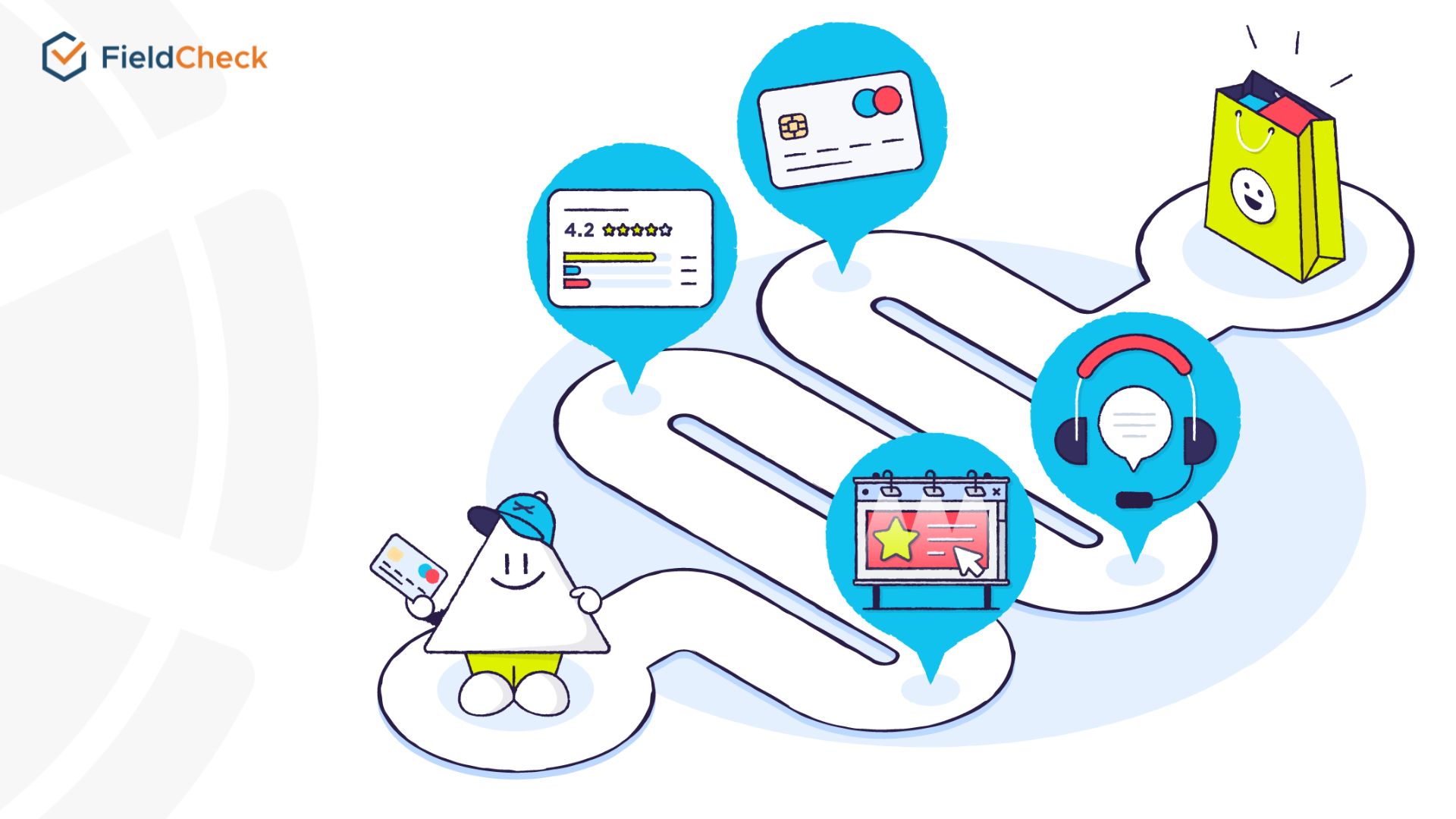
Get into actions
Step 8. Change, adjust in practice
The analyzed data will let businesses know what they need to do next, such as making adjustments on the website, creating a more prominent Call to Action button, or having a longer description to clarify a good feature.
In addition, your map also needs to be re-evaluated on a monthly or quarterly basis to find gaps or opportunities to improve the customer experience better.
Customer Journey Map Case Studies
Here are some good examples of building a successful customer journey map.
#1. Spotify
Spotify is committed to helping people listen to whatever music, whenever and wherever they want. They wanted to improve engagement by adding a powerful sharing function, allowing users to expand their social functionality by sharing music in the Spotify app and using built-in third-party apps.
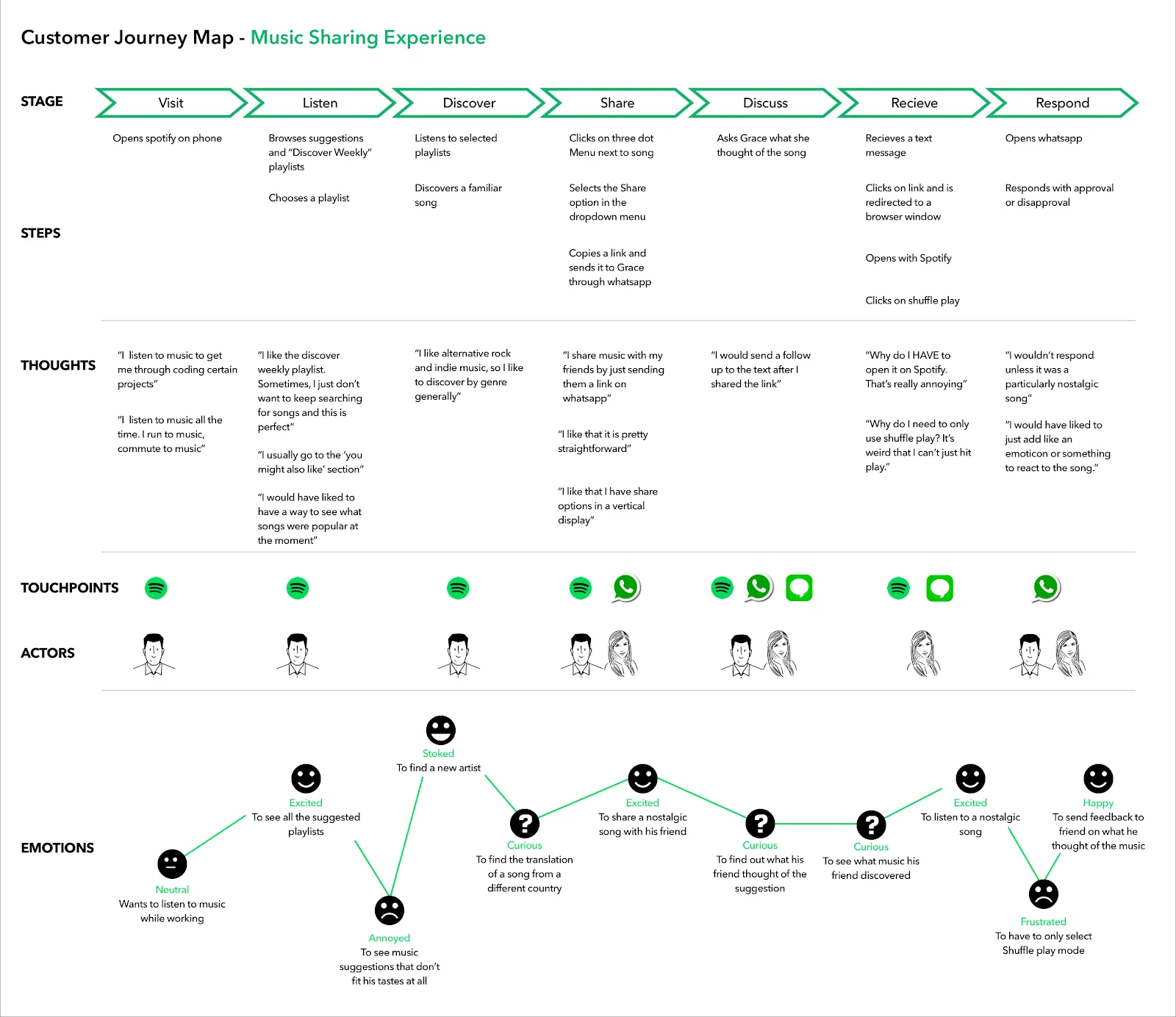
Spotify customer journey map
In this map, we see the user experience from when a user opposes Spotify on mobile to whether they like a song a friend shared. Across each stage, brands list what customers interact with, do, think, and feel.
The agency used data research and customer surveys to understand how users believe in the customer journey to gather this information.
Based on customer journey maps, Spotify can know user weaknesses and address them for a seamless music-sharing experience that encourages more users to share music more -- and do it more often.
This customer journey map is great as it helps identify key areas of customer interaction, consider customer behavior, and deliver an enjoyable customer experience.
#2. TurboTax
Turbo Tax is the leading online software package for tax returns. This solution can deliver a customer journey map for better understanding of the overall customer experience.
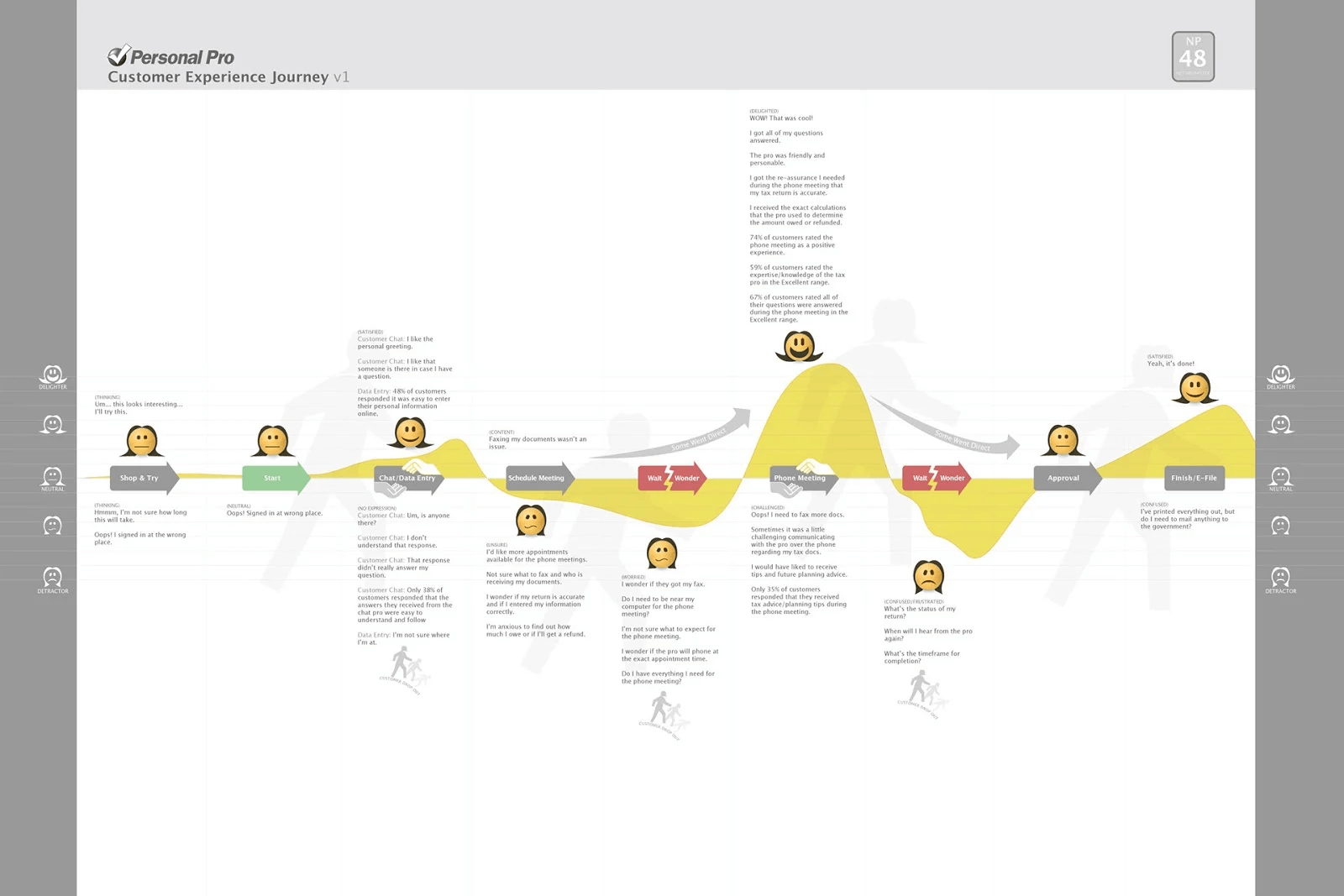
TurboTax's customer journey map
The team utilizes a combination of customer surveys, data research, and main conversations with tax experts to understand how the product matches the lives of those who use it.
#3. Amazon
Amazon is one of the world's e-commerce giants with its own technology and systems to take customers through their sales journey. Their customer journey map will take most people days to read and understand as it's quite complicated.
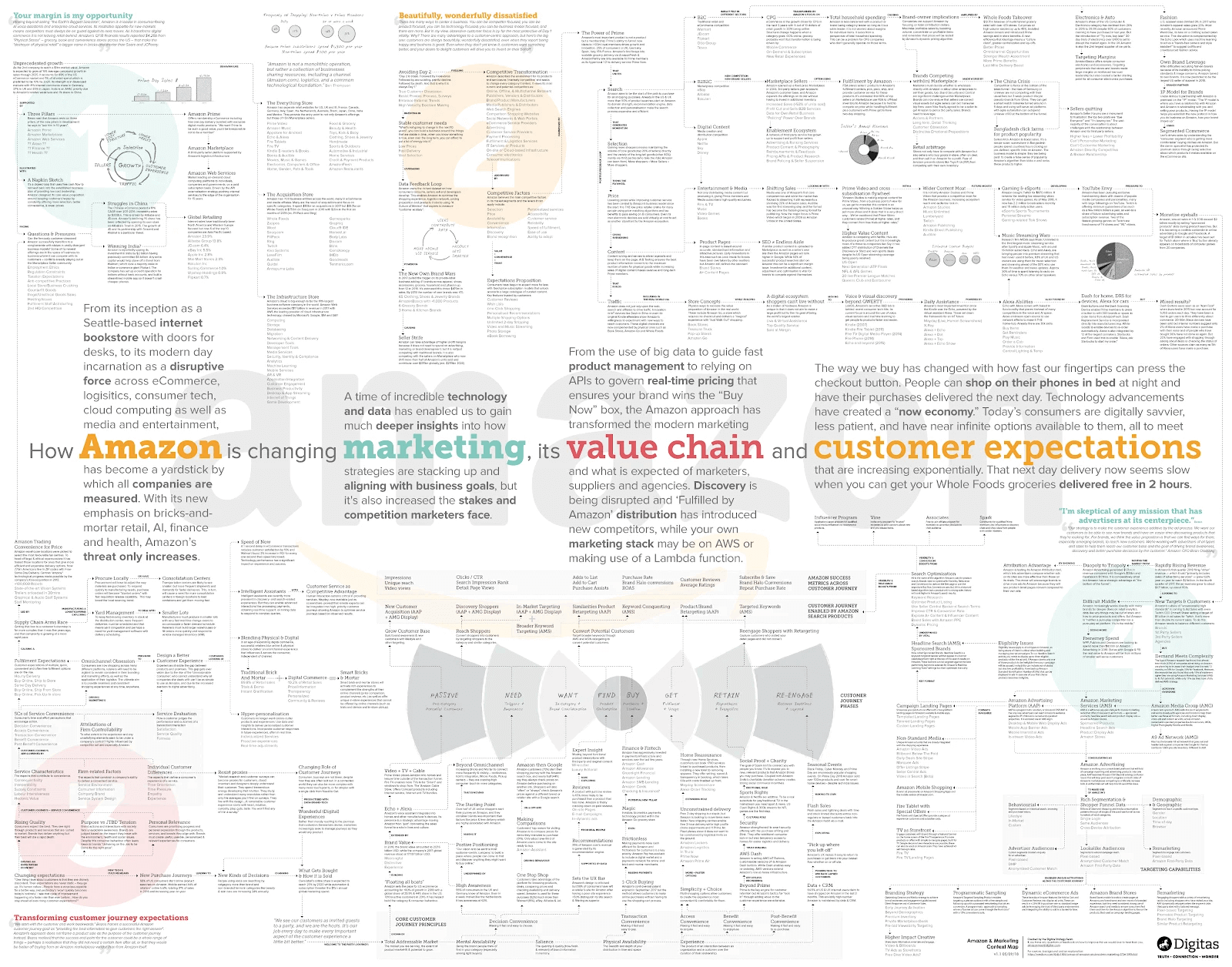
Amazon's customer journey map
However, after all, if it is applied in the right way, it can help understand the customers and introduce a suitable customer journey strategy to develop businesses.
Wrapping Up
In general, the customer journey map has been getting more attention thanks to the outstanding advantages it brings.
Most prominent is the trend of personalizing the business customer journey to increase customer loyalty and improve the customer experience when interacting with your brand, products, and services.




